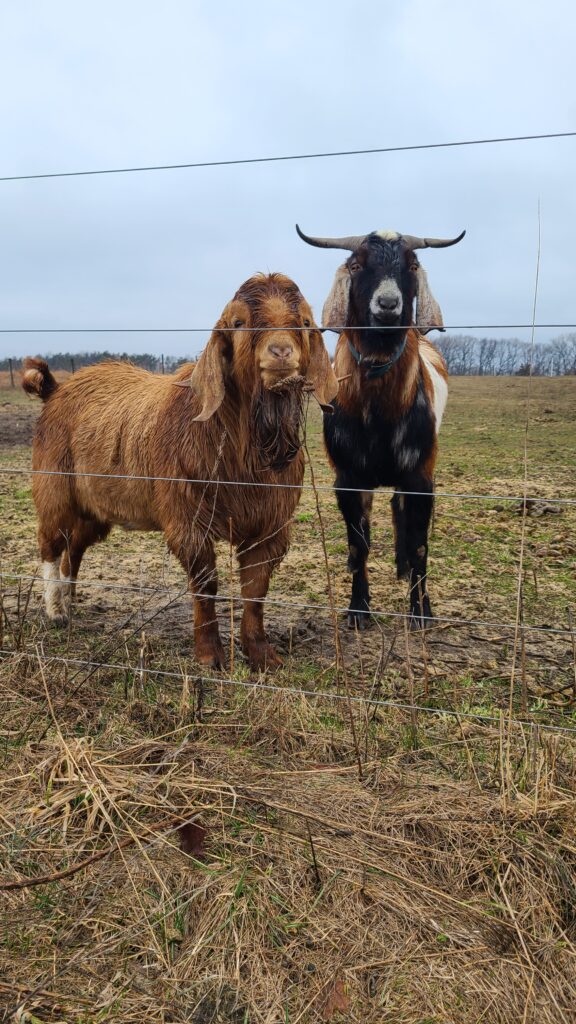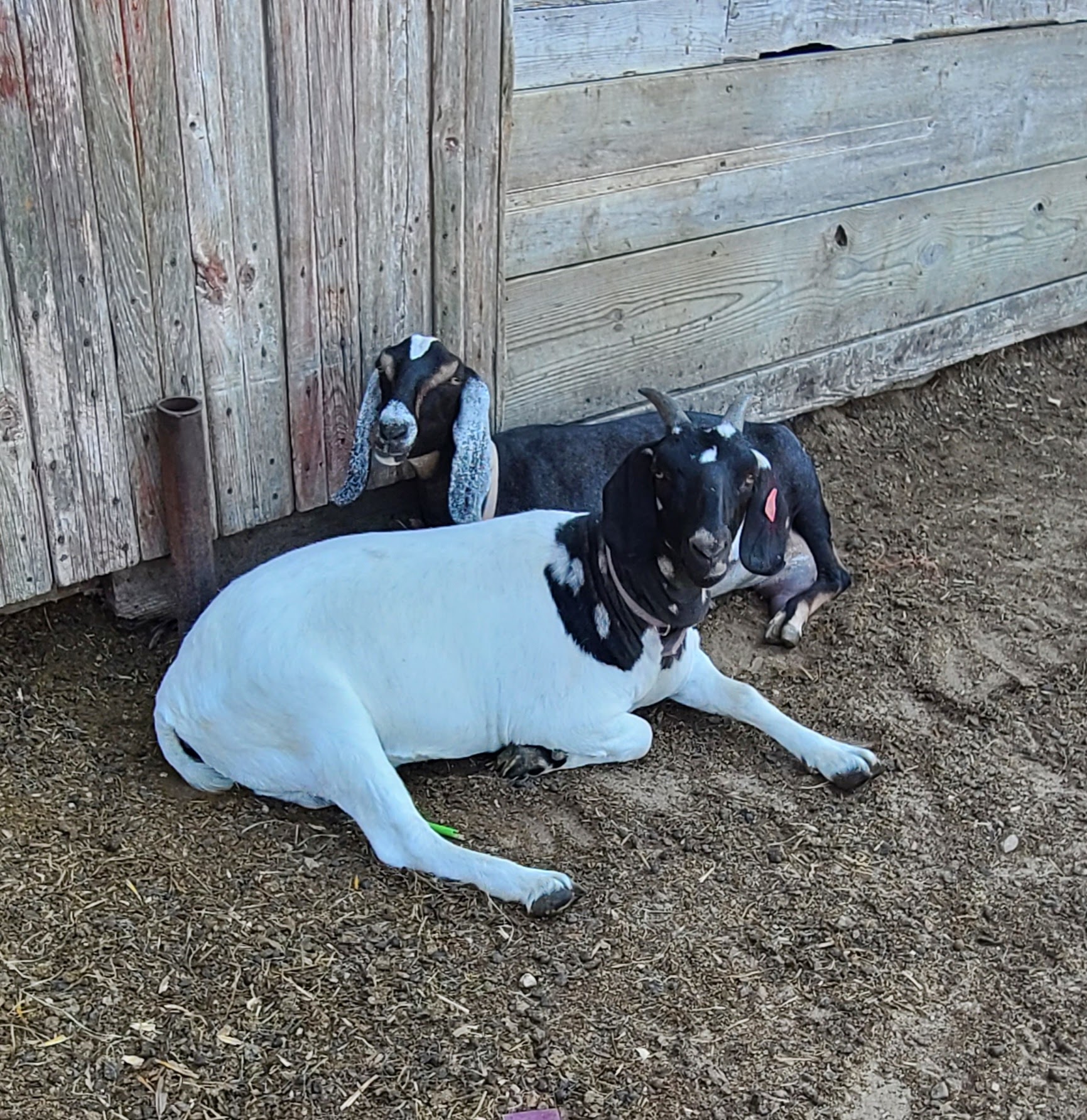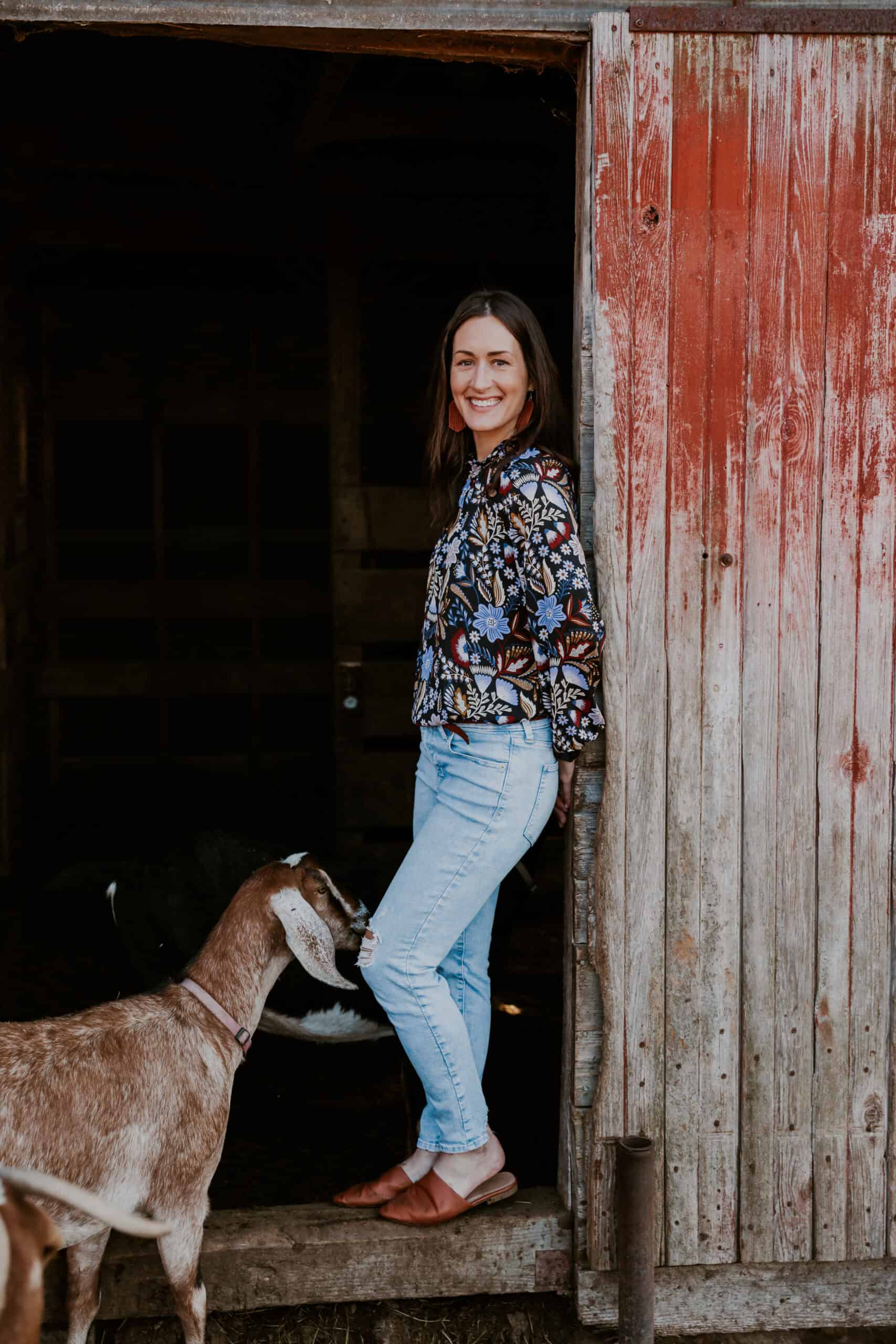This post contains affiliate links. As an Amazon Associate, I earn from qualifying purchases.
I raise Boer and Nubian goats, both are large breeds with long, pendulous ears. Boers are a meat breed, while Nubians are a dairy breed. I am often asked which of the two are my favorite. There is not an easy winner, I like them for different reasons.
Here I put the two breeds head to head and compared them in several categories. Depending on what is most important to you, this might help you decide which breed is the best fit for the goals of your farm.
Health of Boer vs. Nubian Goats
I have had very few health problems with any of my goats over the past 25 years. With adequate food, shelter, space, access to free-choice minerals, and rotational grazing, my goats thrive even with the ever-changing Michigan seasons. To learn about different ways to provide minerals to your goats, click here to read my article.
The only distinct health factor where I see a difference between my Boer and Nubian goats is parasite resistance. I completed the online course and obtained my FAMACHA certification and card through the University of Rhode Island. I regularly check the inner eyelid of my herd for signs of anemia. This along with body scoring, monitoring changes in manure, and sending in samples for fecal analysis help me decide who needs to be dewormed and who doesn’t. More of my Boers require periodic deworming than my Nubians.
Growth Rate of Boer vs. Nubian Goats
Both genetics and the quality of feed supplied play a role in how quickly my goats gain weight. I have found my dam-raised Nubian kids gain weight at a faster rate than my dam-raised Boer kids. I believe this is due to the quantity of, and butterfat content, in the Nubian milk.
In contrast, when I wean kids and put them on grain and hay or forage, I observe a faster growth rate in the Boers compared to the Nubians.
Temperament of Boer vs. Nubian Goats
Of course, individual goats of any breed have their own personalities. Some are friendly, while others are aloof.
My Nubian goats are more excited to see me when I come out, follow me around, and are easier to train than the Boers. They are very motivated by treats! That being said, they can be a little clingy and are more likely to jump on or crowd people.
My Boers, on the other hand, are very docile- nothing gets them too excited. They can be stubborn to teach to lead, but they are generally very calm and sweet.

Noise Level of Boer vs. Nubian Goats
The Nubians easily take this prize! They have a loud, complaining voice that they will use for a variety of reasons including when they are hungry, in heat, or bored.
Your neighbors may not notice that you have goats if you choose to own Boers, they are much quieter.
The good news is that you don’t have to worry about goats of any breed making a racket at night, they usually rest and keep the noise to a minimum while the sun is down.
Mothering Ability of Boer vs. Nubian Goats
I have does of both breeds that are excellent, attentive mothers. Most kids on my farm are dam-raised, so having does that care for, teach, and protect their young is very important to me.
My Nubian does seem to be more tolerant of frequent feedings from their young, as well as being around other doe’s kids. I can put several does and their offspring together and I don’t have to worry much about someone getting hurt. I have some that lay down with and even feed other doe’s babies.
My Boer does are good mothers, but they are more protective. I have some that will push, throw, or block babies that are not their own. Many of my Boer does have horns, so there is a risk of injury if I put them out in a group. Keeping dams in kidding jugs with their own young for at least a week helps ensure that the kids are strong and agile enough to get out of the way of an angry “aunt” if they need to.
Color Variety of Boer vs. Nubian Goats
I have solid and spotted goats of both breeds. Personally, I love the spotted goats!
Both Nubians and Boers come in a range of interesting and beautiful color patterns. Nubians can be black, brown, gray, roan, or cream. They often have a dark dorsal stripe, speckled (frosted ears), white caps on their head (in the poll area), and white belly bands. If they have spots, they are usually lighter in color than the rest of their coats and are called “moon spots.”
Boers can be black, brown, and red but their dominant color pattern is a white body with a colored hood (on the head and/or neck area). This pattern is described as “traditional.” A solid body coat with white on the legs or barrel region is described as “paint.” A Boer with spots is described as being “dappled.”
With either breed, spots are genetic. Breeding for spots is not as easy as it seems though, a spotted sire and dam are not guaranteed to produce spotted offspring. You are better off selecting for conformation, temperament, parasite resistance, and other desirable traits in your breeding pairs and let the color and patterns of the kids surprise you!

Feed Requirements of Boer vs. Nubian Goats
I have found that my Nubians seem to stay fat on air. I can feed them less grain, lower protein grain, or no grain at all and they still have ideal body scores. They do well foraging in pastures and in the woods with my portable solar-powered electric fencing. They are ravenous eaters and would overindulge if I let them. Storing grain in a secure container is a must if you have Nubians!
In my experience, Boers require a higher quality of feed to achieve and maintain top physical shape. The Boers do well on a higher protein grain (at least 16%). The ones that my kids take to the Fair are on a show feed and it definitely makes a difference. They do browse and graze like the Nubians, but I provide supplemental feed for my Boers out on pasture.
Milk Quality of Boer vs. Nubian Goats
This one is pretty easy to answer because the breeds were developed for different reasons, Nubians for milk and Boers for meat. Nubians are considered dairy goats and produce milk that is sweet and high in butterfat. Nubians can produce more than a gallon of milk a day and have well-attached udders and large teats, which makes milking by hand quick and easy. I enjoy milking my Nubians, if you want to milk goats click here to read my article and learn about the equipment you need to get started!
You can milk Boer goats, you will just get less milk and it will not be as sweet and creamy. You may also find that they are harder to milk because they have smaller teats and it is not uncommon for them to have supplemental (extra, or more than 2) teats.
Meat Quality of Boer vs. Nubian Goats
Both Boer and Nubian goats produce lean, delicious meat that is high in iron and protein. The Nubians that we have processed on our farm have less marbling and organ fat accumulation when compared to the Boer carcasses. This isn’t surprising as the Boers were developed specifically for meat production.
Boer vs. Nubian- The Winner
What if you could take the best attributes of both breeds and combine them into one animal? Well, with crossbreeding you can!
Every year, I have my Boer buck cover a few of my Nubian does. The Boer/Nubian cross kids that I get grow amazingly well. These hybrids make excellent market animals because they are larger in size than purebred Boers, and almost just as heavily muscled. They have excellent temperaments and are the healthiest animals I own.

Mother, farmer, author, and teacher by trade… She loves tending to things and watching them grow!
